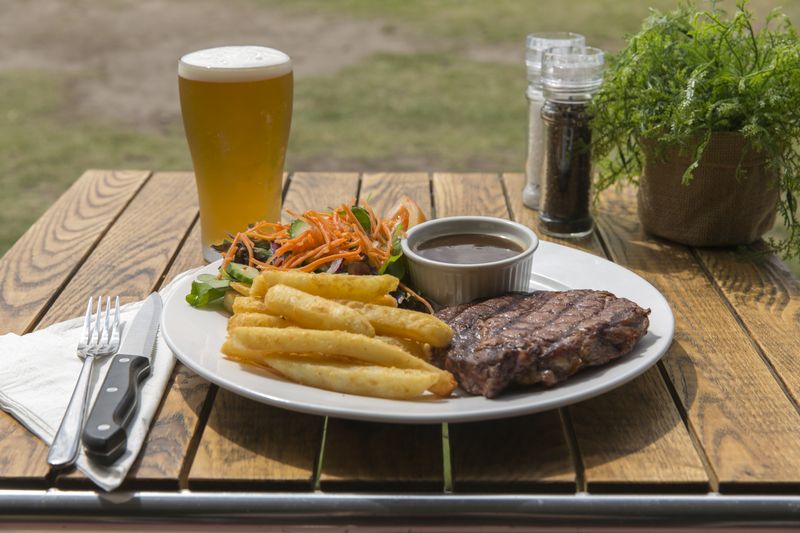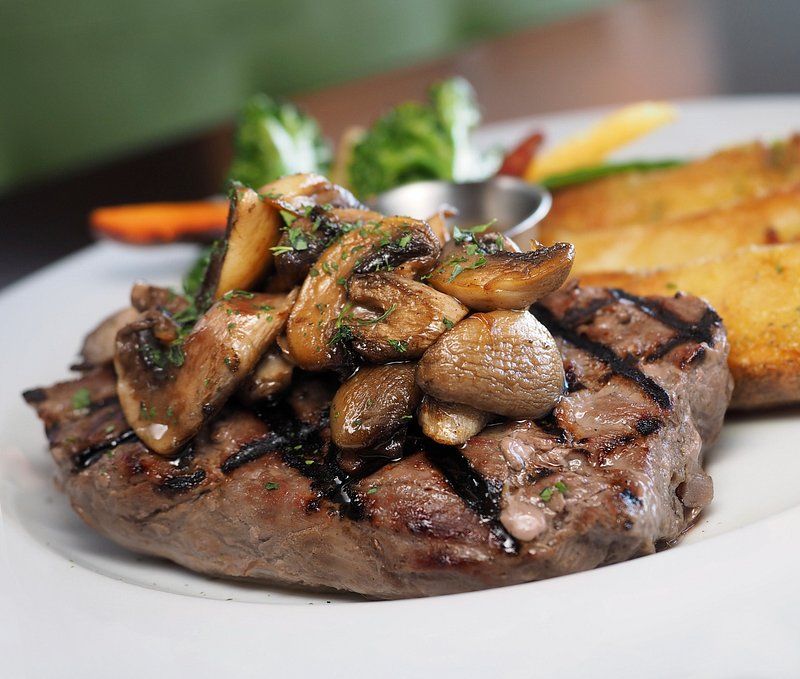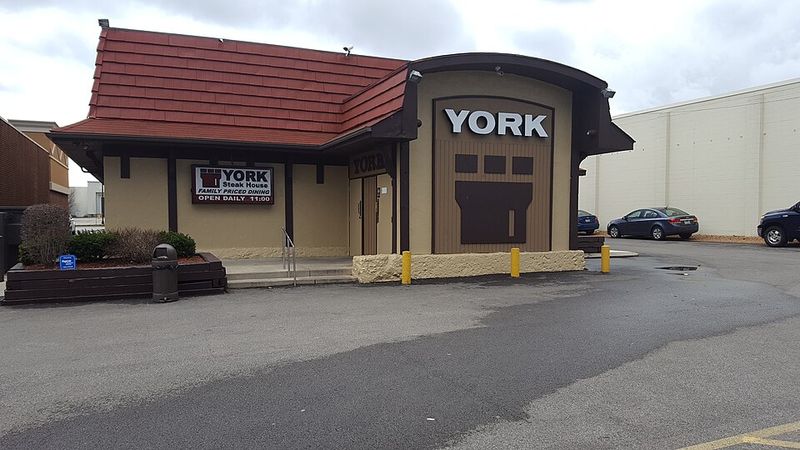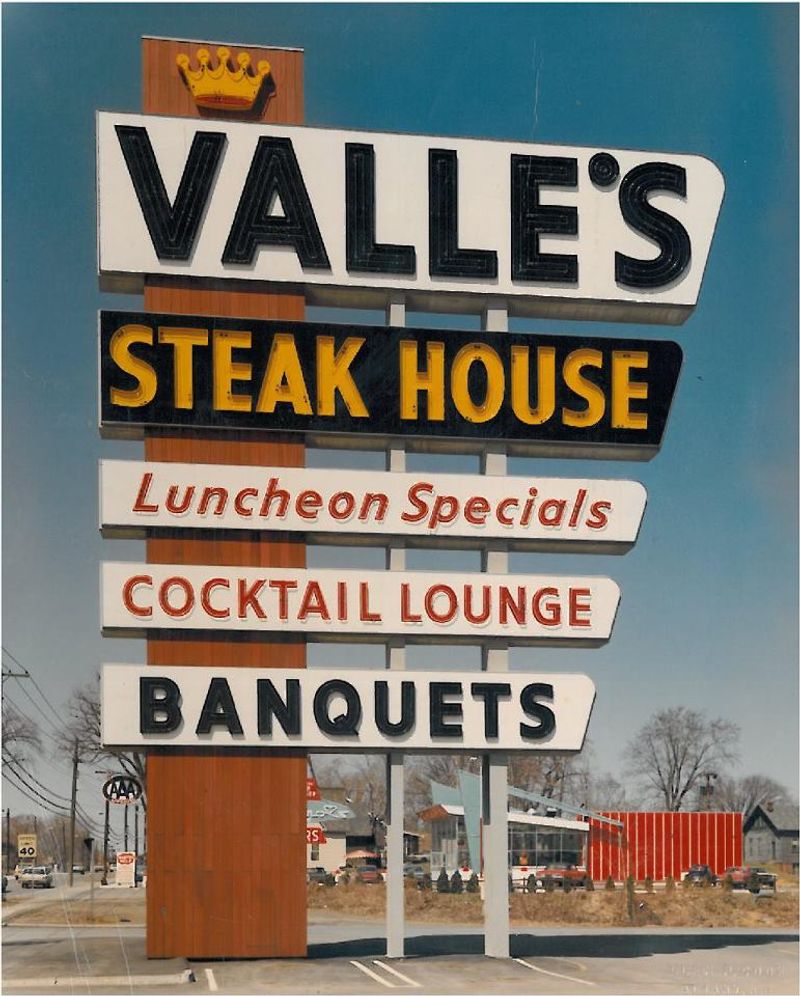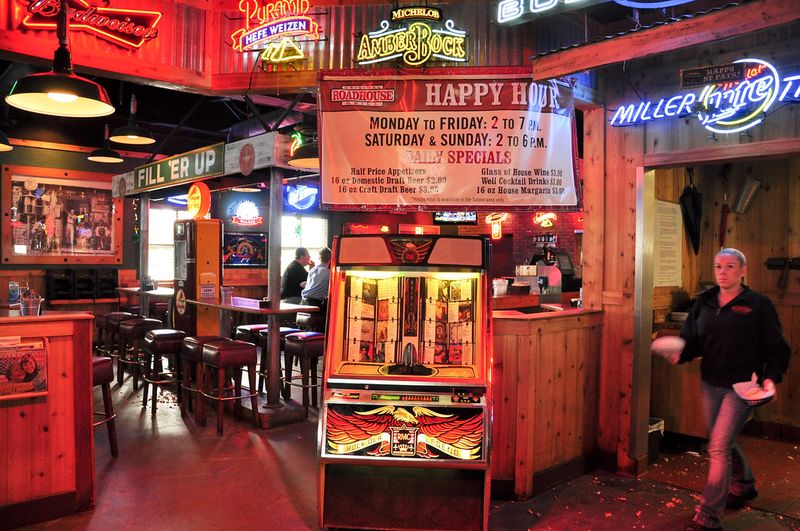American steakhouses weren’t always about fancy white tablecloths and expensive cuts. For decades, families across the country flocked to beloved chain restaurants where sizzling steaks, unlimited salad bars, and fun atmospheres created unforgettable dining memories. These restaurants shaped how Americans ate out, making steak dinners accessible to everyday people. Sadly, many of these iconic spots have closed their doors forever, leaving behind only nostalgic memories and fascinating stories of their glory days.
Steak & Ale
Founded back in 1966, this restaurant chain revolutionized how Americans thought about steak dinners. Before Steak & Ale came along, enjoying a quality steak meant dressing up and spending serious money at fancy restaurants.
Norman Brinker created something different: a place where families could enjoy delicious steaks without breaking the bank or feeling uncomfortable. The Tudor-style buildings with dark wood interiors became instantly recognizable across America.
At its peak, hundreds of locations served millions of customers annually. The unlimited salad bar became legendary, and their signature Kensington Club steak sandwich attracted devoted fans. Financial troubles led to bankruptcy filing in 2008, closing most locations. Though the brand has seen recent revival attempts, those original restaurants remain cherished memories for countless Americans who grew up enjoying affordable steak nights there.
Beefsteak Charlie’s
Picture unlimited beer, wine, salad bar, and shrimp accompanying your steak dinner—all for one reasonable price. That was the genius behind Beefsteak Charlie’s, which started in New York and became a phenomenon.
The restaurant’s “I’ll feed you like there’s no tomorrow” slogan wasn’t just advertising talk. They genuinely delivered incredible value that made competitors nervous. Families celebrated birthdays there, couples enjoyed date nights, and everyone left completely stuffed.
What made this place special was the festive, almost party-like atmosphere. Servers kept refilling drinks and bringing more food while diners laughed and enjoyed themselves. Unfortunately, the very generosity that made Beefsteak Charlie’s popular also hurt profits. Rising food costs made the unlimited concept unsustainable. By the early 2000s, this beloved chain had completely disappeared, though older New Yorkers still reminisce about those legendary all-you-can-eat steak dinners.
York Steak House
Launched in Columbus, Ohio during 1966, York Steak House brought something unusual to American dining: cafeteria-style steak service. Instead of waiting for servers, customers walked through a line selecting their preferred cuts and sides.
This self-service approach kept prices low and service fast, perfect for busy families and budget-conscious diners. By 1982, roughly 200 locations dotted shopping malls and commercial areas nationwide. Kids loved picking out exactly what they wanted, and parents appreciated the affordable prices and quick meals.
The casual atmosphere meant nobody worried about fancy manners or dress codes. However, changing dining preferences and increased competition from other chains gradually eroded York’s customer base. National operations ceased in 1989 as the company couldn’t compete with evolving restaurant trends. Remarkably, one independent location survived until 2022, serving nostalgic customers who remembered the chain’s heyday decades earlier.
Victoria Station
Imagine eating your ribeye inside an authentic railroad boxcar, surrounded by vintage train memorabilia and railway lanterns. Victoria Station turned this creative concept into a nationwide sensation starting in 1969.
Founders Richard Bradley, Robert Freeman, and Peter Lee transformed actual railroad cars into intimate dining spaces. The nostalgia factor combined with quality steaks created a winning formula. Families brought visiting relatives, and kids pressed their noses against windows watching diners in other train cars.
The theming went beyond just decor—employees wore conductor-style uniforms, and railway crossing signs decorated parking lots. At its height, Victoria Station operated dozens of locations from coast to coast. Unfortunately, maintaining those unique buildings proved expensive, and the novelty eventually wore thin. Gradual decline followed through the 1990s and 2000s. The final American location closed its doors in December 2017, ending nearly five decades of railroad-themed steak dinners.
Bugaboo Creek Steakhouse
Talking animatronic moose heads might sound bizarre, but they became the signature feature of Bugaboo Creek Steakhouse. Opening in 1992, this Canadian wilderness-themed chain brought entertainment and food together in unexpected ways.
Walking inside felt like entering a North Woods hunting lodge where the mounted animals suddenly came alive. The moose would crack jokes, sing songs, and interact with surprised diners. Children absolutely loved the experience, making Bugaboo Creek a popular family destination.
Beyond the entertainment, the restaurant served solid steaks and hearty portions in a rustic atmosphere complete with log cabin styling. Parents could enjoy quality meals while kids stayed entertained by the animatronics. Owned by the same company behind Outback Steakhouse, Bugaboo Creek expanded to multiple states during the 1990s. However, high maintenance costs for those elaborate animatronics and shifting dining trends led to closures. The final location shut down in 2016.
Valle’s Steak House
Long before national chains dominated, Valle’s Steak House ruled New England dining. Donald Valle founded the original location in Portland, Maine back in 1933, creating a regional institution that lasted generations.
What started as a single restaurant grew into a beloved chain spanning Massachusetts, New Hampshire, Rhode Island, and beyond. Families made Valle’s their go-to spot for celebrations, anniversaries, and Sunday dinners. The restaurants featured generous portions, reasonable prices, and that comfortable neighborhood feeling.
Valle’s became so embedded in New England culture that mentioning the name still triggers fond memories among older residents. Signature items like their special steak sauce and Caesar salad developed devoted followings. Unfortunately, increased competition from national chains during the 1980s squeezed Valle’s market share. Corporate locations closed around 1991, though some independent franchises limped along. The final independent location served its last steak around 2000, closing a remarkable 67-year chapter.
Roadhouse Grill
Free buckets of peanuts at every table, shells covering the floor, and a fun roadhouse atmosphere—that was Roadhouse Grill’s recipe for success. Founded in 1992, this chain quickly expanded during the casual dining boom of the 1990s.
The concept was simple but effective: quality steaks served in a relaxed, slightly rowdy environment where throwing peanut shells on the floor was actually encouraged. Families appreciated the kid-friendly atmosphere where messiness wasn’t frowned upon. The roadhouse theme included country music, wooden decor, and servers who kept the energy high.
Roadhouse Grill competed directly with established chains like Texas Roadhouse and Outback Steakhouse during a crowded market period. Despite initial success and rapid expansion to over 100 locations, the company struggled financially. Rising food costs and intense competition squeezed profit margins. Bankruptcy filing came in early 2008, and by May that year, all American operations had closed. The rapid rise and fall left former fans disappointed.
The Cattleman
Right in the heart of New York City, The Cattleman served as a carnivore’s paradise for three decades. Opening its doors in 1959, this Manhattan steakhouse became a destination for both locals and tourists seeking authentic New York steak.
Unlike the suburban chains spreading across America, The Cattleman maintained that gritty, urban steakhouse vibe that defined New York dining. Businessmen closed deals over thick cuts, theater-goers grabbed pre-show dinners, and tourists experienced genuine New York hospitality. The restaurant’s reputation for quality beef and no-nonsense service earned loyal customers.
Located in Times Square area, The Cattleman witnessed New York’s transformation through the 1960s, 70s, and 80s. As the neighborhood changed and rents skyrocketed, maintaining operations became increasingly difficult. The restaurant closed sometime in the late 1980s, another victim of Manhattan’s evolving real estate market. Today, few remember this once-popular spot, though it represented an important era in New York’s dining history.
Bonanza Steakhouse
With its Western frontier theme and budget-friendly prices, Bonanza Steakhouse became a family favorite across America. The chain offered an appealing combination: decent steaks, an extensive salad bar, and prices that didn’t scare away parents with multiple hungry kids.
Bonanza positioned itself as the affordable alternative to pricier steakhouses, making steak dinners accessible to working-class families. The self-service buffet concept kept labor costs down while giving customers variety and value. Kids could pile their plates high with salad bar offerings while parents enjoyed reasonably priced steaks.
At its peak, Bonanza operated hundreds of locations nationwide, often in smaller cities and towns where few other steakhouse options existed. The chain eventually merged with sister brand Ponderosa Steakhouse. While some locations still operate today under various ownership, the Bonanza brand has largely faded. Most locations closed over the past two decades as dining preferences shifted away from buffet-style restaurants and budget steakhouses lost their appeal to newer concepts.
Ponderosa Steakhouse
Named after the famous television ranch from “Bonanza,” Ponderosa Steakhouse brought Western hospitality to suburban America. Founded in 1965, the chain grew rapidly by offering families an unbeatable combination of affordable steaks and an all-you-can-eat buffet.
Ponderosa’s business model was brilliant in its simplicity: customers ordered their steak at the counter, then helped themselves to unlimited trips to the buffet bar. This kept service costs low while providing tremendous perceived value. Sunday after church became Ponderosa time for countless American families throughout the 1970s and 80s.
The buffet featured hot dishes, soups, salad fixings, and desserts alongside your cooked-to-order steak. Kids loved the variety and freedom to choose their own food. At one point, Ponderosa operated over 300 locations. However, changing tastes, health concerns about buffets, and competition eroded the customer base. Most locations have closed, though a handful still operate today under different ownership, shadows of the chain’s former glory.

